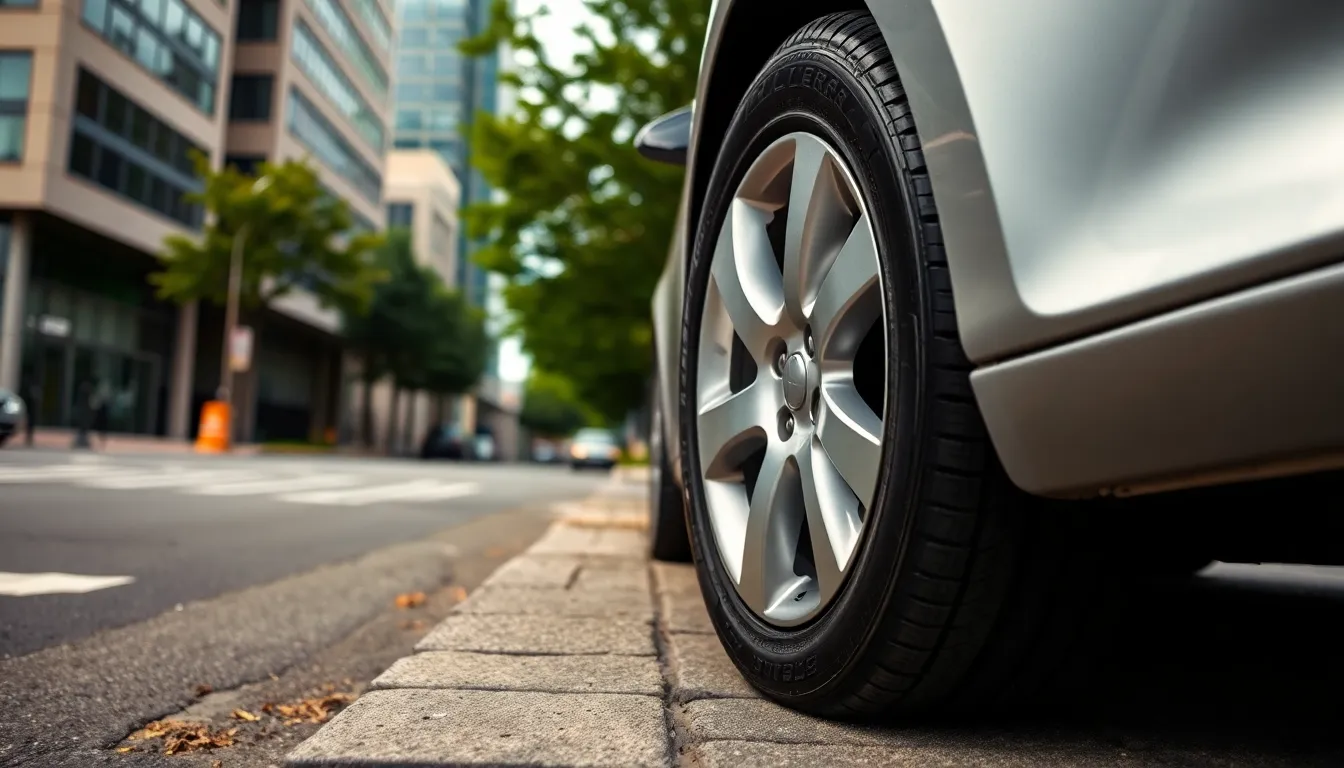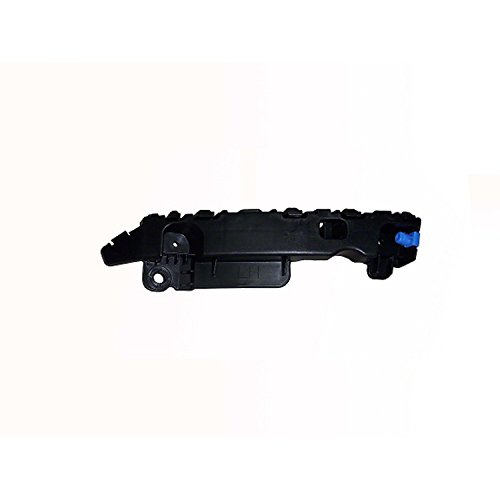Finding the right tire size for your 2012 Chevy Cruze isn’t just about replacing worn rubber – it’s about maximizing your vehicle’s performance, safety, and fuel efficiency. We’ve all been there: standing in a tire shop feeling overwhelmed by numbers and specifications that seem like a foreign language.
Your 2012 Cruze came with exact tire dimensions from the factory, and understanding these measurements can save you hundreds of dollars while ensuring optimal handling and comfort. Whether you’re dealing with a flat tire emergency or planning a seasonal tire change, knowing your exact tire specifications prevents costly mistakes and disappointing performance.
We’ll break down everything you need to know about 2012 Chevy Cruze tire sizes, from decoding those mysterious sidewall numbers to exploring upgrade options that won’t void your warranty. Get ready to become confident in your tire choices and make informed decisions that keep your Cruze running smoothly for years to come.
Understanding the 2012 Chevy Cruze Tire Size Specifications
The 2012 Chevy Cruze comes equipped with exact tire dimensions that vary based on the trim level and wheel configuration. Most base models feature 215/60R16 tires, while higher trim levels use 225/45R18 configurations. These measurements represent critical specifications that affect your vehicle’s handling characteristics and overall performance.
Reading the tire sidewall markings becomes straightforward once you understand each component. The first number (215 or 225) indicates the tire width in millimeters, measuring from sidewall to sidewall when mounted on the recommended rim width. Following this measurement, the second number (60 or 45) represents the aspect ratio as a percentage of the tire’s width to its sidewall height.
Standard 2012 Chevy Cruze Tire Specifications:
| Trim Level | Tire Size | Wheel Diameter | Width (mm) | Aspect Ratio |
|---|---|---|---|---|
| LS | 215/60R16 | 16 inches | 215 | 60% |
| LT | 215/60R16 | 16 inches | 215 | 60% |
| Eco | 215/60R16 | 16 inches | 215 | 60% |
| LTZ | 225/45R18 | 18 inches | 225 | 45% |
The letter “R” designates radial construction, which applies to virtually all modern passenger vehicle tires. Radial tires feature cord plies that run perpendicular to the direction of travel, providing improved fuel economy and longer tread life compared to bias-ply alternatives.
Load index and speed rating complete the tire specification equation for your Cruze. The 215/60R16 configuration typically carries a 95H rating, supporting 1,521 pounds per tire at speeds up to 130 mph. Meanwhile, the 225/45R18 setup often features a 91W rating, handling 1,356 pounds per tire at speeds reaching 168 mph.
Factory wheel specifications directly influence tire fitment and performance characteristics. The 16-inch wheels measure 6.5 inches in width with a 41mm offset, while 18-inch wheels span 7.5 inches with a 35mm offset. These dimensions ensure proper tire seating and maintain the vehicle’s intended suspension geometry.
Tire pressure recommendations remain consistent across both size options at 35 PSI for normal driving conditions. Cold tire pressure checks provide the most accurate readings, typically performed before driving or after the vehicle sits for at least three hours. Maintaining proper inflation extends tire life and optimizes fuel efficiency for your Cruze.
Factory Tire Sizes for Different Trim Levels

Different trim levels of the 2012 Chevrolet Cruze come equipped with exact tire configurations designed to match each model’s performance characteristics. Understanding these factory specifications helps us make informed decisions when replacing or upgrading our tires.
LS and LT Trim Tire Sizes
The LS trim comes standard with 215/60R16 tires across all models. LT trim vehicles offer more variety with two distinct tire size options depending on the exact package selected. Base LT models use the same 215/60R16 configuration as the LS trim, while upgraded LT packages feature 225/50R17 tires for enhanced performance and styling.
| Trim Level | Standard Tire Size | Alternative Size |
|---|---|---|
| LS | 215/60R16 | N/A |
| LT | 215/60R16 | 225/50R17 |
LTZ Trim Tire Sizes
LTZ trim models typically receive larger wheel and tire combinations compared to lower trim levels. These premium configurations enhance both appearance and handling characteristics while maintaining ride comfort. Performance oriented packages often include wider tire profiles that complement the LTZ’s sportier suspension tuning.
Eco Model Tire Specifications
Eco models feature 215/55R17 tires specifically chosen to maximize fuel efficiency. This unique size combines low rolling resistance characteristics with aerodynamic wheel designs. The slightly lower profile compared to base models improves steering response while maintaining the fuel economy focus that defines the Eco variant.
Reading Your Tire Size Information
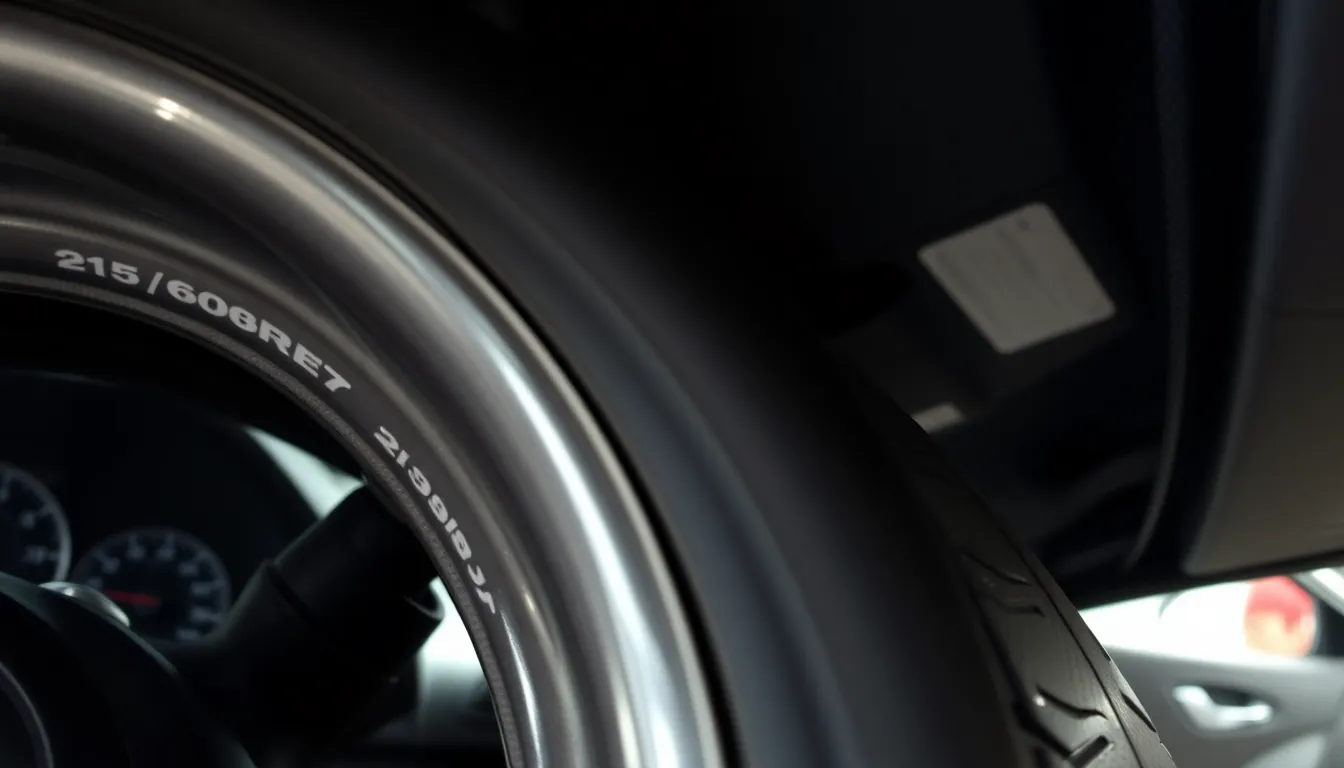
Understanding tire size markings becomes straightforward once you know how manufacturers encode tire specifications. We’ll guide you through decoding these essential numbers and letters that determine your 2012 Chevy Cruze’s tire fitment.
Decoding Tire Size Numbers
Tire size numbers follow a standardized format that reveals critical specifications about your tires. The first number represents the tire width measured in millimeters across the tread from sidewall to sidewall. For example, in the size 215/60R16 found on LS trim models, the 215 indicates a tire width of 215 millimeters.
The second number expresses the aspect ratio as a percentage of the tire’s width. This figure shows the sidewall height relative to the tire’s width. A 60 aspect ratio means the sidewall height equals 60% of the tire’s width. Eco trim models use 215/55R17 tires where the 55 aspect ratio creates a shorter sidewall compared to the LS trim’s 60 aspect ratio.
The letter R designates radial construction, which applies to virtually all modern passenger car tires. Radial construction features cord plies that run perpendicular to the tire’s circumference, providing better fuel economy and handling characteristics.
The final number specifies the wheel diameter in inches that the tire fits. LTZ trim models equipped with 225/45R18 tires require 18-inch wheels, while base LS models with 215/60R16 tires use 16-inch wheels.
Finding Tire Information on Your Vehicle
Your 2012 Chevy Cruze displays tire size information in three primary locations for easy reference. The tire information placard mounted on the driver’s side doorjamb contains the manufacturer’s recommended tire sizes and inflation pressures for your exact trim level.
Your owner’s manual provides comprehensive tire specifications including load index ratings and speed ratings for all available tire sizes. This documentation proves particularly valuable when considering tire replacements or upgrades between different size options.
Existing tire sidewalls display the current tire size along with manufacturing date codes and performance ratings. Examining your current tires helps verify whether previous owners installed the correct factory specifications or aftermarket alternatives that may affect your vehicle’s performance characteristics.
OEM Tire Brands and Performance
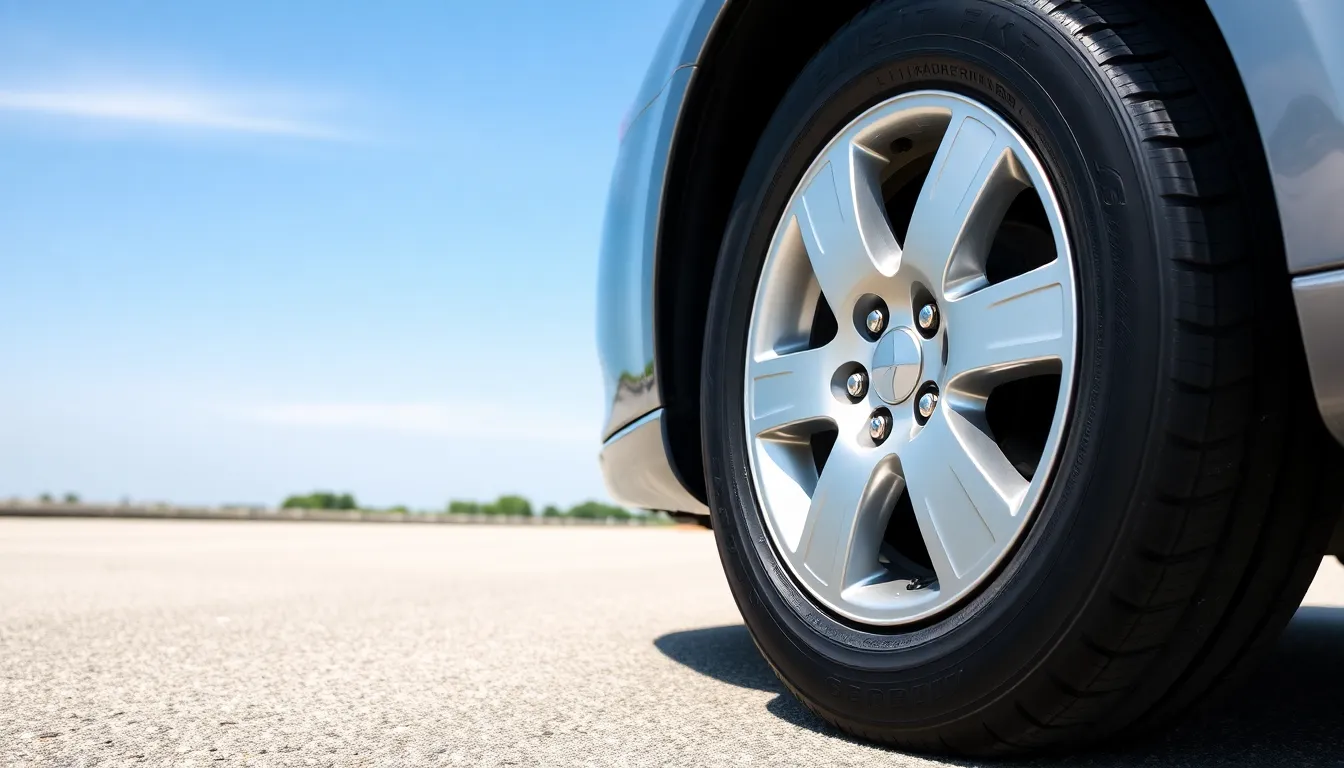
Manufacturers equip the 2012 Chevrolet Cruze with tires from major brands like Michelin and Goodyear to balance ride comfort, fuel efficiency, and safety. Original equipment tires feature low rolling resistance for fuel economy, good wet and dry traction, and quiet operation.
Michelin Energy Saver Tires
Michelin Energy Saver tires serve as original equipment on select 2012 Cruze models, engineered specifically for improved fuel efficiency and reduced rolling resistance. Low rolling resistance technology reduces fuel consumption while maintaining safety standards across various driving conditions.
Enhanced durability extends tread life beyond standard tire configurations, providing long term value for Cruze owners. Wet and dry grip capabilities maintain consistent traction performance regardless of weather conditions.
These tires deliver the fuel efficiency benefits that complement the Cruze’s economy focused engineering, particularly important for Eco trim models equipped with 215/55R17 configurations.
Goodyear Assurance Fuel Max Options
Goodyear Assurance Fuel Max tires represent another original equipment choice for 2012 Cruze models, designed with fuel efficiency technology through advanced low rolling resistance compounds. All season performance delivers reliable traction in both wet and dry conditions throughout the year.
Quiet, comfortable ride characteristics minimize road noise transmission into the cabin, improving the overall driving experience. Engineering focuses on balancing performance with efficiency requirements exact to the Cruze platform.
Both Michelin and Goodyear options provide proven performance for daily driving needs, with exact tire size and brand selection varying based on vehicle configuration and regional availability across different trim levels.
Best Replacement Tire Options for 2012 Chevy Cruze
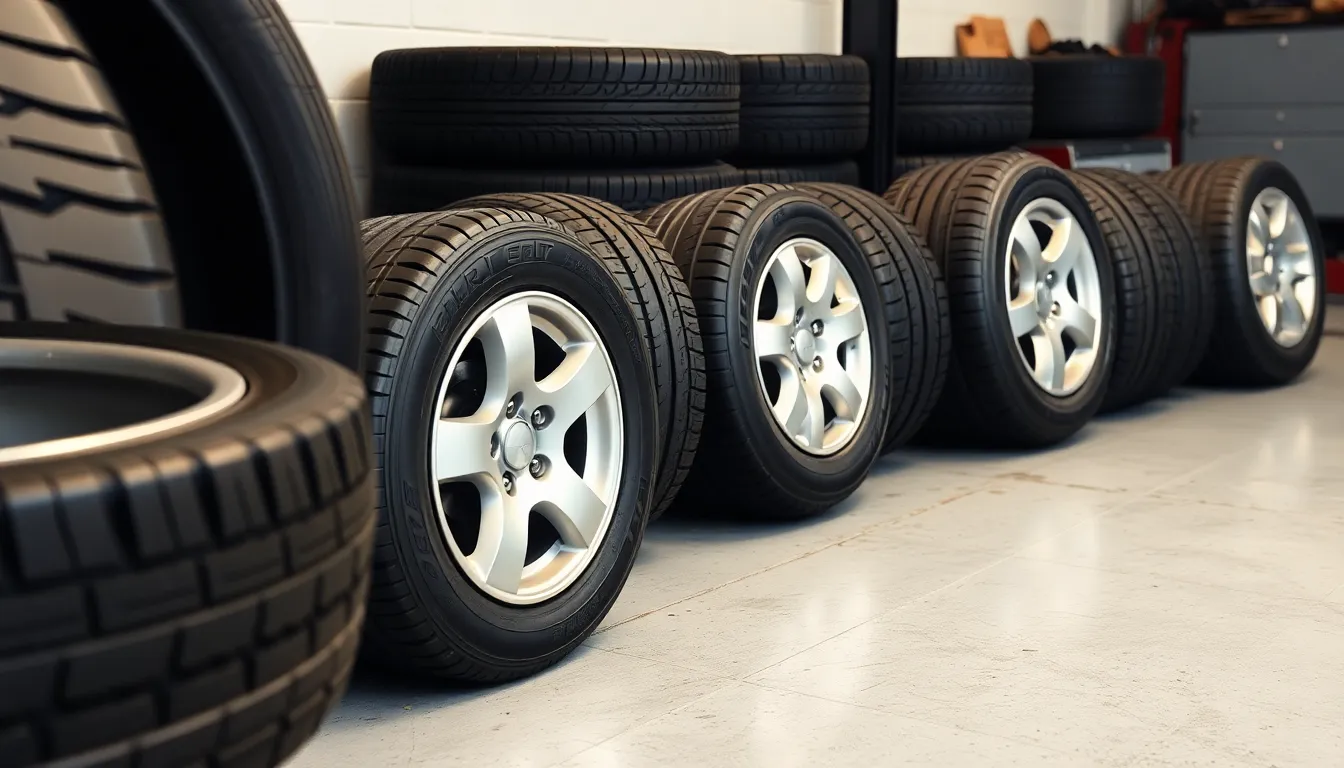
Selecting quality replacement tires for your 2012 Chevy Cruze enhances vehicle performance while maintaining safety standards. The replacement tire market offers diverse options ranging from premium all-season models to budget-conscious alternatives.
All-Season Tire Recommendations
Goodyear Assurance ComfortDrive delivers exceptional year-round performance for 2012 Cruze owners seeking balanced traction and comfort. This tire provides reliable grip in both wet and dry conditions while maintaining a quiet ride quality.
Michelin Defender T+H stands out as a premium all-season choice offering extended tread life and superior fuel efficiency. The tire’s advanced compound technology reduces rolling resistance, helping maintain the Cruze’s economy-focused design.
Bridgestone Turanza QuietTrack excels in noise reduction while delivering consistent performance across various weather conditions. Continental TrueContact Tour rounds out our top recommendations with its advanced tread design that promotes even wear patterns and enhanced wet weather traction.
These all-season options fit the standard sizes: 215/55R17 for Eco models, 215/60R16 or 205/60R16 for LS trim, and 225/50R17 or 215/60R16 for LT configurations.
Performance Tire Upgrades
Performance enthusiasts can upgrade to 225/45ZR18 tires for improved handling characteristics and a sportier appearance. This size requires compatible 18-inch wheels and professional fitment verification to ensure proper clearance.
Michelin Pilot Sport A/S provides enhanced cornering stability while maintaining all-season versatility for daily driving. Continental ExtremeContact DWS06 offers superior grip in both dry and wet conditions, making it ideal for drivers seeking performance without sacrificing year-round usability.
225/50R17 performance variants deliver improved responsiveness compared to standard touring tires. These upgrades enhance steering precision and cornering confidence while maintaining compatibility with existing LT trim wheel specifications.
Budget-Friendly Alternatives
Cooper Evolution Tour provides reliable all-season performance at an accessible price point for cost-conscious Cruze owners. This tire offers dependable traction and durability without compromising basic safety requirements.
Goodyear Reliant delivers consistent performance across the 2012 Cruze’s various tire sizes while maintaining affordability. The tire’s tread design provides adequate wet weather traction for everyday driving scenarios.
Uniroyal Tiger Paw GTZ completes our budget recommendations with its focus on value and reliability. These alternatives are widely available in standard Cruze sizes: 215/55R17, 215/60R16, 205/60R16, and 225/50R17, ensuring compatibility across all trim levels.
Plus Sizing and Wheel Upgrade Considerations

Plus sizing transforms your 2012 Chevy Cruze’s appearance and performance by increasing wheel diameter while maintaining the original overall tire diameter. We recommend following exact upgrade paths to preserve proper vehicle function and safety.
Benefits of Larger Wheel Sizes
Enhanced aesthetic appeal represents the most immediate benefit of upgrading to larger wheels on your Cruze. Upgrading from 16-inch to 17-inch wheels creates a more aggressive, sportier appearance that complements the vehicle’s design. Moving from 215/60R16 to 225/50R17 or 215/50R17 maintains the same overall diameter while providing a more substantial visual presence.
Improved handling characteristics emerge when you transition to larger wheel sizes with lower profile tires. The reduced sidewall height decreases flex during cornering, resulting in more precise steering response and better road feedback. Performance enthusiasts often upgrade from 17-inch to 18-inch configurations, such as moving from 225/50R17 to 225/45ZR18, to maximize these handling benefits.
Better braking performance accompanies larger wheel upgrades due to increased contact patch and reduced sidewall flex. The enhanced wheel-to-tire relationship provides more consistent braking feel and shorter stopping distances under normal driving conditions.
Impact on Ride Quality and Performance
Reduced ride comfort occurs as a tradeoff when upgrading to larger wheels with lower profile tires. The decreased sidewall flexibility means less cushioning between the wheel and road surface, transmitting more road imperfections directly to the cabin. Drivers switching from the standard 215/60R16 configuration to larger alternatives often notice increased road noise and harsher impact absorption over bumps and potholes.
Increased vehicle weight affects overall performance when upgrading to larger wheel and tire combinations. Larger wheels typically weigh more than their smaller counterparts, creating additional unsprung weight that can impact acceleration, braking efficiency, and fuel economy. The 2012 Cruze’s economy-focused design particularly benefits from maintaining lighter wheel configurations.
Higher replacement costs represent a important consideration for plus sizing upgrades. Larger diameter tires cost more to replace than standard sizes, and lower profile tires typically wear faster due to reduced sidewall protection. Speed rating and load capacity requirements become more critical with larger wheel upgrades, requiring careful specification matching to maintain safety standards.
Tire Maintenance Tips for Your Cruze

Proper tire maintenance keeps our 2012 Chevy Cruze operating at peak performance while maximizing tire longevity and safety. Regular maintenance routines protect our investment and ensure optimal vehicle handling across all driving conditions.
Monthly pressure checks form the foundation of effective tire care. We check tire pressure monthly using a quality gauge when tires are cold, maintaining the recommended 30-35 psi as specified on our vehicle’s placard or owner’s manual. Correct pressure prevents premature wear patterns and maintains fuel efficiency ratings that complement our Cruze’s economy-focused design.
Tire rotation schedules distribute wear evenly across all four tires. We rotate tires every 6,000-8,000 miles following the manufacturer’s recommended rotation pattern. This practice extends overall tire life significantly and maintains consistent traction characteristics across all wheel positions.
Tread depth monitoring helps us identify when replacement becomes necessary. We use a tread depth gauge or perform the penny test by inserting a penny headfirst into the tread grooves. Lincoln’s visible head indicates tread depth below 2/32 inch, signaling immediate replacement requirements for safety compliance.
Wheel balancing and alignment services address vibrations and uneven wear patterns. We schedule professional balancing when experiencing steering wheel vibrations or after mounting new tires. Alignment checks become essential when noticing pulling tendencies or irregular tread wear across tire surfaces.
Visual damage inspections catch potential problems before they become safety hazards. We examine tires for cuts, punctures, bulges, or sidewall damage before and after extended trips. Early detection prevents roadside emergencies and maintains our vehicle’s reliability standards.
Seasonal tire considerations optimize performance for exact weather conditions. We evaluate whether all-season tires meet our regional climate demands or if dedicated winter tires provide superior cold-weather traction. Seasonal changes ensure optimal grip and handling characteristics year-round.
Spare tire maintenance prepares us for emergency situations. We check spare tire pressure monthly and inspect its condition regularly, ensuring it meets load requirements for temporary use. Proper spare tire care provides peace of mind during unexpected tire failures.
Following these maintenance practices preserves our 2012 Chevrolet Cruze tire performance while extending service life and maintaining safety standards across all driving scenarios.
Where to Buy Tires for Your 2012 Chevy Cruze

Finding the right tires for your 2012 Chevy Cruze becomes straightforward when you know where to shop and what to look for. Three major retailers stand out for their comprehensive selection and professional services.
Discount Tire offers the most extensive inventory for all 2012 Cruze trim levels, carrying everything from standard all-season options to specialized snow tires and spare tire replacements. Their competitive pricing structure includes tire protection plans that cover road hazard damage and mounting services. Online ordering with in-store installation provides convenience for busy schedules, while their price matching policy ensures you get the best deal available.
Firestone Complete Auto Care maintains a premium tire catalog organized by brand and size specifically for the 2012 Cruze LT and other trim levels. Their appointment scheduling system accommodates weekend installations, making tire replacement accessible for working professionals. Quote requests can be submitted online, allowing you to compare prices before visiting their service centers.
Goodyear Tires specializes in OEM-compatible options with detailed fitment guides that match your exact trim level requirements. Their tire sizing tools ensure optimal compatibility with your vehicle’s original specifications, reducing the risk of performance issues or safety concerns. Direct manufacturer support provides access to the latest tire technologies and warranty coverage.
| Retailer | Key Features | Installation Options |
|---|---|---|
| Discount Tire | Wide selection, protection plans, price matching | Online ordering with in-store installation |
| Firestone Complete Auto Care | Premium brands, weekend hours, online quotes | Professional installation with appointments |
| Goodyear Tires | OEM compatibility, detailed fitment guides | Manufacturer warranty and support |
Local tire shops often provide personalized service and competitive pricing for common sizes like 215/60R16 and 225/50R17. Independent retailers may offer faster turnaround times and more flexible scheduling options compared to national chains.
Verifying tire size compatibility before purchase prevents costly mistakes and ensures your safety on the road. Original equipment sizes like 205/60R16, 215/60R16, 215/55R17, and 225/50R17 represent the safest choices unless you’re specifically upgrading your wheel and tire package.
Conclusion
Understanding your 2012 Chevy Cruze’s tire specifications empowers you to make smart purchasing decisions that directly impact your vehicle’s performance and your wallet. Whether you’re sticking with factory sizes or exploring upgrade options we’ve covered the essential knowledge you need to navigate tire replacement confidently.
Regular maintenance paired with the right tire choice ensures your Cruze delivers optimal fuel efficiency safety and comfort for years to come. From budget-friendly all-season options to performance upgrades there’s a tire solution that matches your driving needs and budget constraints.
We’ve provided the roadmap—now it’s time to put this knowledge into action and experience the difference the right tires can make for your Cruze’s performance.
Frequently Asked Questions
What is the standard tire size for a 2012 Chevy Cruze?
The standard tire size depends on your trim level. Base LS models use 215/60R16 tires, while LT models can have either 215/60R16 or 225/50R17. LTZ trims feature larger combinations, and Eco models use 215/55R17 tires specifically designed for fuel efficiency. Check your driver’s side doorjamb for the exact specification.
How do I read tire size markings on my Cruze?
Tire size follows a standardized format: width/aspect ratio/construction/wheel diameter. For example, in 215/60R16, “215” is the width in millimeters, “60” is the aspect ratio percentage, “R” indicates radial construction, and “16” is the wheel diameter in inches. This information appears on your tire sidewall.
What are the best replacement tire brands for a 2012 Chevy Cruze?
Premium options include Michelin Defender T+H and Goodyear Assurance ComfortDrive for all-season performance. Budget-friendly alternatives include Cooper Evolution Tour and Goodyear Reliant. For performance upgrades, consider Michelin Pilot Sport A/S or Continental ExtremeContact DWS06. Always match your original tire size specifications.
Can I upgrade to larger wheels on my 2012 Cruze?
Yes, you can upgrade through plus sizing while maintaining the original overall tire diameter. Larger wheels offer better aesthetics and handling but may reduce ride comfort and increase costs. Common upgrades follow specific size combinations to preserve speedometer accuracy and vehicle safety. Consult a tire professional for proper fitment.
How often should I rotate tires on my 2012 Chevy Cruze?
Rotate your tires every 5,000-7,500 miles or as recommended in your owner’s manual. Regular rotation ensures even tread wear and extends tire life. Also check tire pressure monthly, inspect for damage regularly, and monitor tread depth using the penny test to maintain optimal performance and safety.
Where should I buy tires for my 2012 Chevy Cruze?
Major retailers like Discount Tire, Firestone Complete Auto Care, and Goodyear offer extensive inventory and professional installation. Local tire shops provide personalized service and competitive pricing. Always verify tire size compatibility before purchase and consider original equipment sizes for optimal safety and performance unless planning specific upgrades.

